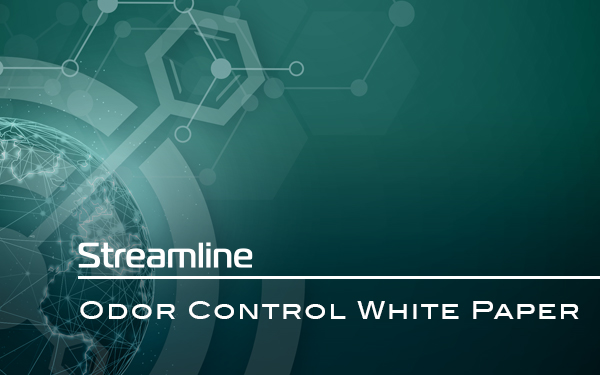ln our white paper Wastewater Odor Control Technology and Best Practices we cover traditional H2S treatment methods in detail and the best practices in noxious odor control for wastewater facilities.

White Paper Summary
Wastewater Odor Control in the Spotlight
Odor control at municipal and industrial wastewater treatment facilities has become a primary concern, as population growth brings more people into proximity of wastewater operations.
Residential communities are less tolerant of nuisance odors, and failure to cost-effectively control noxious odors can result in significant fines, damage corporate reputations and stress goodwill with communities.
Fortunately, wastewater professionals have a variety of odor control technologies available. In this paper we cover the most common odor control methods and discuss the best practices in wastewater management.
The Problem of H2S Treating and Wastewater Odor Control
At the root of odors generated from wastewater operations is hydrogen sulfide (H2S), which is a naturally occurring compound generated by bacterial breakdown or decomposition of organic material, both plant and animal, in anaerobic (absence of oxygen) conditions.
Hydrogen sulfide is a toxic, poisonous gas that is destructive to infrastructure and can be deadly to humans. H2S treatment is a critical concern for wastewater odor control.
H2S Treatment Methods
Methods for mitigating H2S-related odors have evolved over time, and today wastewater professionals have a variety of alternatives at their disposal.
Odor control H2S treating methods today include:
- Aqueous phase H2S treatments (traditional)
- Vapor phase H2S treatments (traditional)
- Next Generation Redox for H2S treating (modern)
Traditional H2S treating methods have their individual benefits and drawbacks, which we cover in our white paper on odor control best practices.
The Future of Wastewater Treatment – Next Generation Redox
Recent technological breakthroughs in chemistry and process optimization have ushered in a new era of H2S treating and wastewater odor control.
The TALON® Sulfide Elimination System (TSES™) from Streamline Innovations is a next generation Redox process for H2S treatment in both the water and vapor stages, eliminating foul odors without the downsides of traditional H2S treating methods.
TALON® Sulfide Elimination System technology page.
The TSES is a true game changer, by being the only solution capable of H2S treatment in both water and vapor phases. Using the same catalyst in both water and atmospheric situations, it works equally well (no loss in efficacy). This provides tremendous flexibility in applications at municipal and industrial wastewater operations.
Regenerative Solution. The TSES is a regenerative process that restores the chemistry so it can be reused, significantly reducing the cost of H2S treating.
Contact
Contact Streamline Innovations to learn more about next generation Redox solutions for odor control and determine if the TALON® Sulfide Elimination System (TSES™) is right for your wastewater facility.
Stewart North
Business Development Director, Municipal & Industrial
E: Stewart.North@streamlineinnovations.com
T: (859) 948-1638
About Streamline Innovations
Streamline Innovation’s vision is Eliminating Emissions Through Technology. We help heavy industry around the world achieve environmental performance objectives, improve sustainability, and transition to a sustainable, low-carbon economy.
Streamline’s environmentally forward H2S treating solutions help achieve the “E” in ESG. H2S is present in many industrial processes throughout the world. Our technology can be applied across industries, delivering a sustainable solution that eliminates H2S, a leading cause of human inhalation accidents and source of SO2 emissions, a primary cause of acid rain. TALON® chemistry treats effectively in both gas and water phases.
Streamline believes that achieving environmental sustainability directives requires data. Creating intelligent systems that operate effectively and efficiently without human intervention is critical to measuring and reducing emissions that harm the environment. We integrate advanced process control, data collection and analytics in our technologies to provide a total solution for customers.
We serve organizations in multiple sectors, including Energy/Oil & Gas, Biogas, Landfill Gas & Renewable Fuels, Municipal Wastewater and Industrial Air & Water.

